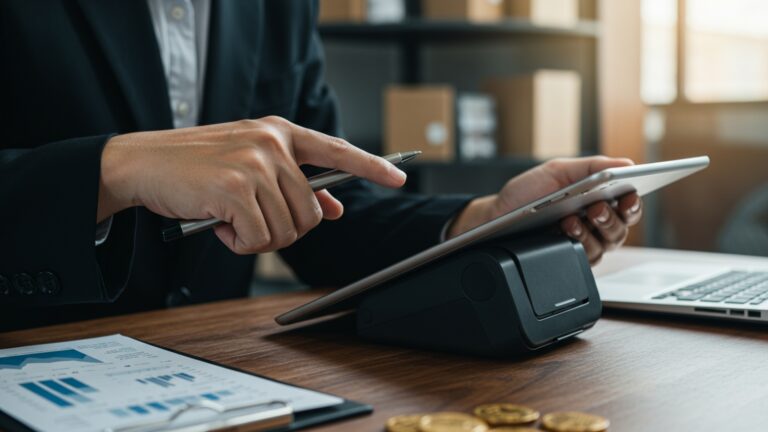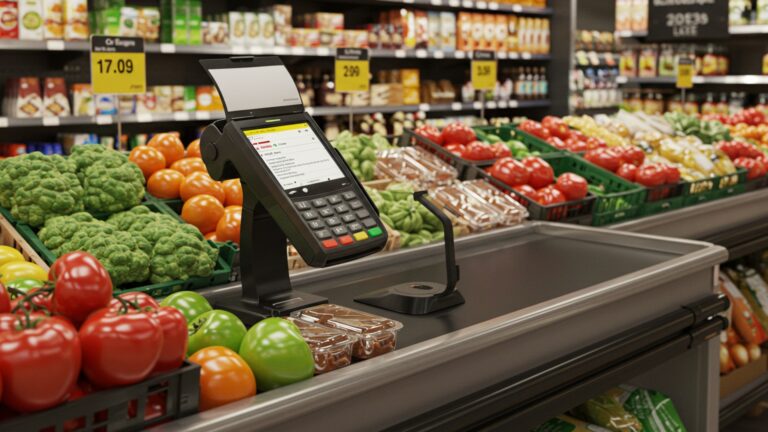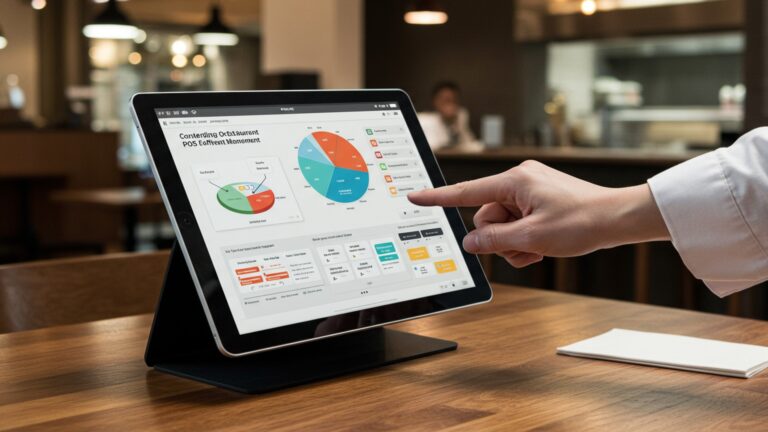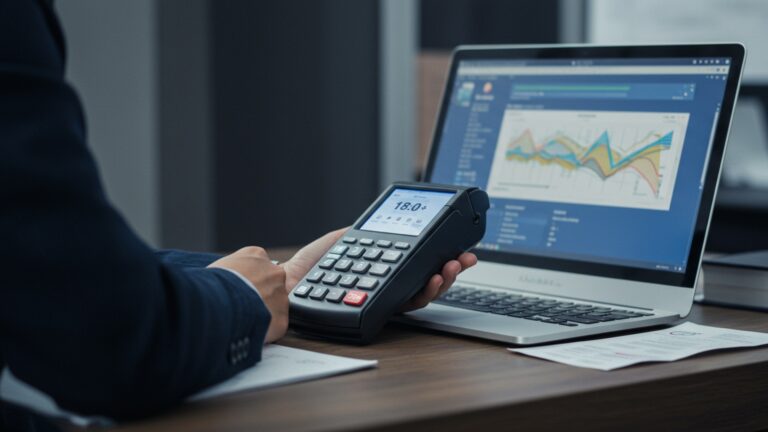How to Easily Set Up Mobile POS Software for Your Small Business
Today’s small businesses navigate an increasingly dynamic market, demanding agility, robust operational efficiency. the flexibility to transact anywhere. This pivotal shift makes mobile POS software an indispensable tool, transforming a smartphone or tablet into a powerful sales terminal. No longer confined to traditional checkout counters, entrepreneurs can now seamlessly process contactless payments at pop-up events, manage real-time inventory updates from a food truck, or capture customer data directly at a client’s location. Leveraging cloud-based infrastructure, modern mobile POS software solutions offer integrated payment processing and instant sales analytics, democratizing advanced retail capabilities that were once exclusive to larger enterprises. Understanding its straightforward setup is key to unlocking this operational freedom and driving immediate business growth.
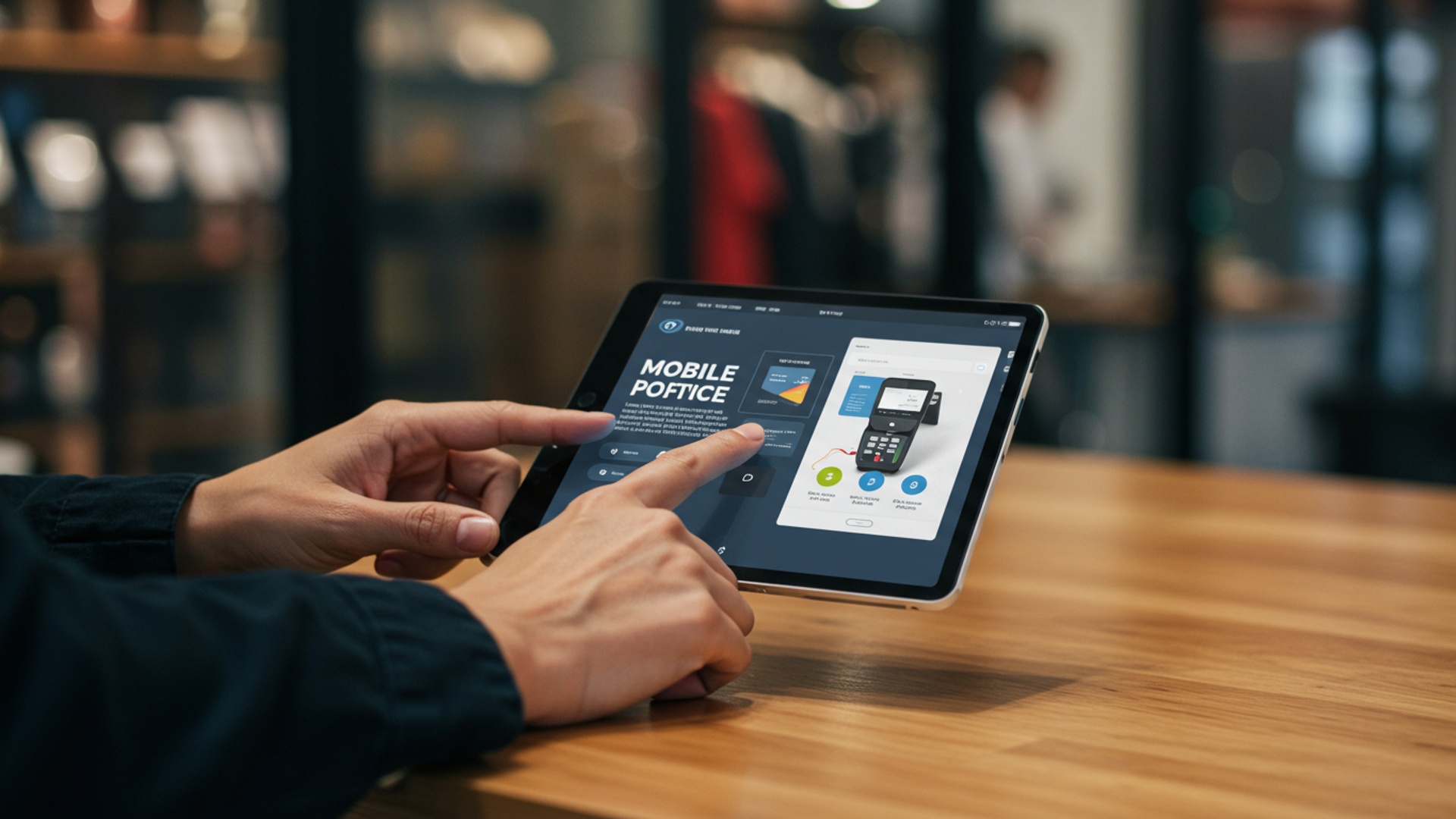
Understanding Mobile POS Software: A Fundamental Shift for Small Businesses
In today’s fast-paced retail and service landscape, traditional point-of-sale (POS) systems, often characterized by bulky registers and extensive wiring, are increasingly being supplanted by more agile and efficient solutions. Central to this evolution is mobile POS software. But what exactly does this entail. how does it differ from its predecessors?
A POS system, at its core, is the point where a customer makes a payment for goods or services. It’s where sales transactions are completed. Historically, these were fixed terminals, often requiring dedicated hardware and complex installations. Mobile POS software, by contrast, transforms a portable device – such as a smartphone, tablet, or even a specialized handheld terminal – into a fully functional cash register. This shift means that businesses are no longer tethered to a counter, offering unparalleled flexibility.
Consider a local artisan selling handmade jewelry at a craft fair. Instead of juggling cash and manual receipts, they can simply pull out a tablet, scan a product’s barcode with an attached reader. accept payment via a card reader plugged into the device. The entire transaction is processed and recorded instantly, powered by the mobile POS software running on their tablet. This contrasts sharply with a fixed-location retail store using a traditional system, which might involve a dedicated computer, monitor, cash drawer. receipt printer all wired together.
The key distinction lies in mobility and accessibility. Traditional POS systems typically operate on a closed, often on-premise network, while modern mobile POS software predominantly leverages cloud technology. This means sales data, inventory. customer details are stored securely in the cloud, accessible from anywhere with an internet connection. This cloud-based approach not only enhances data security and backup capabilities but also reduces the need for expensive on-site IT infrastructure.
Why Mobile POS Software is a Game-Changer for Small Businesses
For small businesses, embracing mobile POS software isn’t just about keeping up with technology; it’s about unlocking significant operational advantages that directly impact profitability and customer satisfaction. The benefits extend far beyond simply processing payments on the go.
- Enhanced Customer Experience
- Increased Flexibility and Mobility
- Cost-Effectiveness
- Streamlined Operations
- Data-Driven Decisions
Imagine a busy coffee shop during peak hours. Instead of a long queue at the counter, baristas can take orders and payments directly from customers waiting in line, speeding up service and reducing wait times. A study by the National Retail Federation highlights that speed and convenience are top priorities for modern consumers.
This is arguably the most significant advantage. Whether you run a food truck, a pop-up shop, an outdoor market stall, or provide on-site services like plumbing or beauty treatments, mobile POS software allows you to conduct business wherever your customers are. Sarah, who runs a mobile pet grooming service, once told us, “Being able to process payments right after a grooming session with my tablet means I never miss a sale. clients appreciate the convenience.”
Traditional POS systems often require substantial upfront investment in hardware, software licenses. installation. Mobile POS software, conversely, often works with existing smartphones or tablets and typically operates on a subscription model, making it far more affordable for small businesses with limited budgets.
Beyond just transactions, many mobile POS solutions offer integrated inventory management, employee tracking. sales reporting. This means fewer manual tasks, less human error. more accurate insights into your business’s performance. For instance, knowing which products sell best at certain times or locations can inform better purchasing decisions.
With cloud-based reporting, small business owners can access real-time sales data, track trends. monitor employee performance from anywhere. This powerful data allows for informed decision-making, helping to optimize inventory, marketing strategies. staffing levels.
Key Features to Look for in Mobile POS Software
When selecting mobile POS software, not all solutions are created equal. Identifying the core features that align with your business needs is crucial for a successful implementation. Here are essential functionalities to prioritize:
- Payment Processing
- Inventory Management
- Sales Reporting & Analytics
- Customer Relationship Management (CRM)
- Employee Management
- Offline Mode
- Integrations
- Hardware Compatibility
- Scalability
This is fundamental. Ensure the software supports various payment methods, including credit/debit cards (chip, swipe, tap), mobile payments (Apple Pay, Google Pay). potentially ACH or gift cards. Look for secure encryption and PCI compliance.
The ability to track products, manage stock levels, receive alerts for low inventory. categorize items is vital for retail and product-based businesses. Some advanced systems even handle variations (size, color) and bundle pricing.
Robust reporting features allow you to see sales trends, top-selling products, employee performance. peak business hours. Real-time access to this data via a dashboard is a significant advantage.
Features like customer profiles, purchase history tracking, loyalty programs. email marketing integrations can significantly enhance customer engagement and retention.
This includes time tracking, shift scheduling, permission levels for different roles. sales performance tracking for individual employees.
Essential for businesses operating in areas with unreliable internet connectivity. An offline mode allows transactions to be processed and stored locally, syncing with the cloud once a connection is re-established.
Consider how the mobile POS software integrates with other essential business tools you might use, such as accounting software (e. g. , QuickBooks, Xero), e-commerce platforms (e. g. , Shopify, WooCommerce), or marketing tools.
Confirm that the software supports the card readers, receipt printers, barcode scanners. cash drawers you plan to use or purchase.
Choose a solution that can grow with your business, offering additional features or plans as your needs evolve.
Essential Hardware for Your Mobile POS Setup
While the beauty of mobile POS software lies in its flexibility, certain hardware components are typically necessary to create a fully functional and efficient system. The exact setup will depend on your business type and needs. here’s a general overview of common components:
- Tablet or Smartphone
- Card Reader
- Magstripe (Swipe)
- EMV (Chip)
- NFC (Tap-to-Pay)
- Bluetooth Readers
- Plug-in Readers
- Receipt Printer
- Thermal Printers
- Bluetooth/Wi-Fi Printers
- USB Printers
- Barcode Scanner
- Bluetooth Scanners
- Integrated Camera Scanners
- Cash Drawer
- Tablet Stand/Enclosure
This is the brain of your mobile POS. An iPad, Android tablet, or even a robust smartphone serves as the primary interface for running the mobile POS software. Ensure your device meets the software’s minimum operating system requirements.
This is crucial for accepting modern payments. There are several types:
Older technology. still supported by some.
More secure, reads the chip on credit cards.
Enables contactless payments from cards and mobile wallets (Apple Pay, Google Pay). Many modern readers combine EMV and NFC.
Connect wirelessly to your tablet/smartphone, offering greater flexibility.
Connect directly to your device’s headphone jack or charging port.
While many customers opt for email or SMS receipts, a physical printer is often necessary, especially for certain regulated industries or for customers who prefer a paper copy.
Most common for receipts, fast and quiet.
Offer wireless connectivity, allowing you to print from anywhere within range.
Require a direct connection, often used in a more stationary setup.
Essential for businesses selling physical products. It speeds up checkout, reduces manual entry errors. improves inventory accuracy.
Wireless and convenient.
Some mobile POS software can use your device’s camera to scan barcodes, though dedicated scanners are usually faster and more reliable for high-volume use.
If you accept cash payments, a secure cash drawer is necessary. Many modern cash drawers can be triggered to open automatically by the POS software when a cash sale is completed.
For a more stationary mobile setup (e. g. , a counter in a small boutique), a secure stand or enclosure can protect your device, offer a professional appearance. provide a stable base for interaction.
When purchasing hardware, it’s often best to consult your chosen mobile POS software provider for a list of compatible devices. This ensures seamless integration and avoids compatibility issues down the line.
Step-by-Step Guide: Setting Up Your Mobile POS Software
Setting up mobile POS software doesn’t have to be daunting. By following a structured approach, you can get your small business up and running efficiently. This guide provides actionable steps to ensure a smooth transition.
Step 1: Choose Your Mobile POS Software Provider
This is the foundational decision. Research various providers like Square, Shopify POS, Clover, Lightspeed, or Revel Systems. Consider their pricing models (monthly fees, transaction rates), features (as discussed above), customer support. scalability. Many offer free trials, which are invaluable for testing the system in your specific business context. For instance, if you run a cafe, ensure the mobile POS software handles modifiers (e. g. , “extra shot,” “almond milk”) efficiently.
Step 2: Download and Install the App
Once you’ve selected a provider, download their dedicated mobile POS software application from your device’s app store (Apple App Store for iOS, Google Play Store for Android).
// For iOS devices 1. Open the "App Store" app. 2. Search for "[Your Chosen POS Provider Name]". 3. Tap "Get" and then "Install". 4. Enter your Apple ID password or use Touch ID/Face ID if prompted. // For Android devices 1. Open the "Google Play Store" app. 2. Search for "[Your Chosen POS Provider Name]". 3. Tap "Install". 4. Accept any requested permissions.
Follow the on-screen prompts to create your account or log in if you’ve already registered online.
Step 3: Configure Your Business Settings
This is where you personalize the mobile POS software for your specific operations.
- Business data
- Payment Settings
- Receipt Options
- User Permissions
Enter your business name, address, contact details. tax details. This is crucial for receipts and financial reporting.
Connect your bank account for payouts. Set up sales tax rates that apply to your products or services.
Customize your receipts (logo, contact info, return policy) and decide on default delivery methods (print, email, SMS).
If you have employees, create user accounts and assign appropriate roles and permissions (e. g. , cashier, manager, owner).
Step 4: Add Your Products or Services
This is a critical step for retail and service businesses.
- Manual Entry
- Bulk Import
- Variations and Modifiers
- Images
For a small number of items, you can manually input product names, descriptions, prices, categories. stock levels directly into the mobile POS software.
Most systems allow you to upload a spreadsheet (CSV file) with your entire product catalog. This is highly recommended for businesses with extensive inventories. Ensure your spreadsheet columns match the import template provided by your POS software.
Set up product variations (e. g. , “T-shirt – Small, Blue”) and modifiers for customizable items (e. g. , “Coffee – Add extra shot,” “No whipped cream”).
Add product images to make your catalog visually appealing and easy to navigate for cashiers.
Step 5: Connect Your Hardware
Now, integrate your chosen hardware components with your mobile POS software.
- Card Reader
Most card readers connect via Bluetooth. Turn on your reader, put it in pairing mode (often by holding a button). then go to your device’s Bluetooth settings or the POS app’s hardware settings to pair it.
// Example: Pairing a Bluetooth card reader 1. Ensure your card reader is charged and powered on. 2. Put the reader into pairing mode (refer to reader's manual, often a button press). 3. On your tablet/smartphone, go to Settings -> Bluetooth. 4. Select the card reader from the list of available devices. 5. Confirm pairing, usually within the mobile POS software app itself.
If it’s a Bluetooth or Wi-Fi printer, connect it through your device’s settings or the POS app. For USB printers, you might need a hub or specific adapter for your tablet.
Similar to the card reader, most Bluetooth scanners will pair via your device’s Bluetooth settings.
Often connected directly to the receipt printer or via a dedicated USB port, allowing the POS software to trigger its opening.
Always test each piece of hardware after connection to ensure it’s communicating correctly with your mobile POS software.
Step 6: Conduct Test Transactions
Before serving real customers, perform several test transactions.
- Process sales using different payment methods (cash, card, mobile pay).
- Issue refunds or voids to interpret the process.
- Check if inventory levels update correctly after sales.
- Verify that receipts are printing or being sent as expected.
- Ensure sales reports accurately reflect your test transactions.
This step helps identify and resolve any issues before they impact your actual business operations. Many providers offer a “test mode” within their mobile POS software for this purpose.
Comparing Mobile POS Software with Traditional POS Systems
Understanding the fundamental differences between mobile POS software and traditional POS systems is crucial for small business owners making an informed decision. While both serve the purpose of processing transactions, their architecture, deployment. operational implications vary significantly.
| Feature | Mobile POS Software | Traditional POS System |
|---|---|---|
| Hardware Requirements | Uses off-the-shelf smartphones/tablets; compact, often wireless peripherals (card readers, small printers). | Dedicated, bulky terminals; monitors, cash drawers, full-size printers, barcode scanners often hardwired. |
| Software Deployment | Cloud-based application; downloaded from app stores; regular automatic updates. | On-premise software installed on local servers/computers; manual updates, often requiring IT support. |
| Cost (Initial & Ongoing) | Lower initial cost (uses existing devices); subscription-based software; transaction fees. | High upfront cost for hardware, software licenses, installation; potentially higher maintenance fees. |
| Mobility | Highly mobile; transactions can occur anywhere with internet (or offline mode). Ideal for pop-ups, food trucks, field services. | Fixed location; transactions tied to a specific counter or workstation. |
| Scalability | Easily scalable; add more devices/users with subscription upgrades; flexible for seasonal peaks. | Can be complex to scale; often requires additional hardware purchases and installation. |
| Data Access & Reporting | Real-time, cloud-based access from any device; robust analytics dashboards. | Data often stored locally; access typically limited to on-site terminals or specific network. Reporting can be less flexible. |
| Integrations | Strong integration capabilities with cloud-based accounting, e-commerce, CRM platforms. | Integrations can be more complex, often requiring custom development or specific connectors. |
| Maintenance & Support | Software updates handled by provider; cloud-based support. Minimal on-site IT required. | Requires on-site IT for hardware and software maintenance, troubleshooting. updates. |
For a small business, especially one starting out or with dynamic operational needs, the flexibility, lower cost. ease of use of mobile POS software often make it the more attractive option. Traditional systems typically suit larger enterprises with complex, fixed-location needs and dedicated IT infrastructure.
Optimizing Your Mobile POS Software for Peak Performance
Once your mobile POS software is up and running, there are several strategies you can employ to ensure it performs optimally and truly enhances your business operations. These tips focus on best practices for daily use and ongoing management.
- Regular Software Updates
- Stable Internet Connection
- Employee Training
- Secure Your Devices
- Monitor Inventory Levels
- Utilize Reporting and Analytics
- Customer Feedback Integration
- Physical Hardware Maintenance
- Review Your Pricing Plan
Always keep your mobile POS software and your device’s operating system updated. Updates often include critical security patches, bug fixes. new features that can improve performance and user experience. Enable automatic updates where possible.
While many mobile POS solutions offer an offline mode, a stable and fast internet connection (Wi-Fi or cellular data) is crucial for real-time syncing, cloud backups. efficient payment processing. Consider a backup internet option if your primary connection is unreliable.
Thoroughly train all staff members on how to use the mobile POS software effectively. This includes processing sales, refunds, applying discounts, managing inventory checks. troubleshooting common issues. Well-trained staff lead to faster transactions and fewer errors.
Implement strong passwords or biometric security (fingerprint/Face ID) on your tablets and smartphones. Ensure your Wi-Fi network is secure. Regular backups of your device’s data (if not fully cloud-synced) are also advisable.
Actively use the inventory management features of your mobile POS software. Set up low-stock alerts and conduct regular inventory counts to ensure accuracy. This prevents stockouts and helps optimize purchasing.
Don’t just process transactions; assess the data. Regularly review sales reports, identify peak selling times, top-performing products. employee efficiency. This data is invaluable for making informed business decisions, as emphasized by industry experts like those at the Retail Management Institute.
If your mobile POS software allows for customer feedback at the point of sale, leverage it. This direct input can provide immediate insights into customer satisfaction and areas for improvement.
Keep your card readers, printers. scanners clean and charged. Replace worn-out cables or batteries promptly. A well-maintained hardware setup ensures smooth operations.
Periodically review your mobile POS software subscription plan. As your business grows, you might need more advanced features, or you might find a more cost-effective plan for your current volume.
Troubleshooting Common Mobile POS Software Issues
Even with the most robust mobile POS software, occasional issues can arise. Knowing how to quickly troubleshoot common problems can save time, prevent lost sales. reduce frustration. Here are some typical scenarios and their solutions:
Issue 1: Card Reader Not Connecting or Processing Payments
- Check Bluetooth/Connectivity
- Restart Devices
- Check POS App Settings
- Internet Connection
- Test with Another Card
- Contact Support
Ensure the card reader is charged, turned on. properly paired via Bluetooth to your device. Go to your device’s Bluetooth settings and confirm it’s connected. If it’s a plug-in reader, ensure it’s securely inserted.
Often, a simple restart of both your tablet/smartphone and the card reader can resolve temporary glitches.
Verify within your mobile POS software settings that the correct card reader is selected and configured.
Confirm your device has a stable internet connection. While some readers offer offline mode, many require connectivity for authorization.
Sometimes the issue might be with the customer’s card. Try a different card to rule this out.
If all else fails, reach out to your mobile POS software provider’s customer support. They can often diagnose specific hardware or account-related issues.
Issue 2: Receipt Printer Not Printing
- Check Power and Paper
- Connectivity
- POS App Settings
- Test Print
- Driver/Firmware
Ensure the printer is turned on, plugged in. has enough paper.
If it’s a Bluetooth or Wi-Fi printer, confirm it’s connected to your device’s Bluetooth or the same Wi-Fi network as your tablet. Restart the printer and re-pair if necessary.
Go into the mobile POS software‘s printer settings to ensure the correct printer is selected and that receipts are enabled.
Most printers have a test print function (often a button combination) to confirm they are physically working.
Occasionally, the printer’s firmware or a specific driver might need updating. Consult the printer manufacturer’s website or your POS provider’s support.
Issue 3: Inventory Discrepancies
- Manual Errors
- Scanning Issues
- Returns/Exchanges
- Multi-Location Sync
- Conduct Regular Audits
The most common cause. Double-check manual entries for products received or sold.
Ensure barcode scanners are working correctly and not missing scans.
Verify that returns and exchanges are processed correctly through the mobile POS software, as they impact inventory.
If you have multiple locations or sales channels, ensure all systems are syncing correctly. A delay in sync can show temporary discrepancies.
Perform physical inventory counts regularly and reconcile them with your POS system data. This helps identify ongoing issues.
Issue 4: Slow Performance or App Crashes
- Clear Cache
On your tablet/smartphone, try clearing the cache for the mobile POS software app.
// For Android: 1. Go to Settings -> Apps (or Applications). 2. Find your POS app. 3. Tap "Storage" -> "Clear Cache". (Avoid "Clear Data" unless instructed by support, as it might delete settings). // For iOS: Unfortunately, iOS doesn't offer a direct "Clear Cache" for individual apps. Reinstalling the app is often the only way. back up any local data first.
A simple restart can free up memory and resolve temporary slowdowns.
Ensure your device has sufficient free storage space. Low storage can impact app performance.
If many apps are running in the background, they might be consuming resources. Close unnecessary applications.
Ensure your mobile POS software is updated to the latest version.
Conclusion
You’ve seen how straightforward it is to deploy mobile POS software, truly transforming your small business operations. Don’t let the idea of new technology intimidate you; the reality is that today’s platforms are incredibly intuitive and designed for ease of use. My personal tip? Start with a free trial, like those often offered by leading providers. integrate just one core feature, say mobile payments via a QR code system, into your daily routine. Observe how quickly your staff adapts and customers appreciate the swift, seamless experience. This small, actionable step is crucial in today’s market, where consumers expect modern conveniences and efficiency. Implementing a mobile POS isn’t just about processing sales; it’s about future-proofing your business, enhancing customer engagement. gaining invaluable real-time insights into your operations from anywhere. Imagine managing peak hours at your pop-up market or a busy food truck with the same efficiency as a traditional storefront. Embrace this digital shift. watch your small business thrive with newfound agility and professionalism.
More Articles
How to Optimize Your Billing Process Using Modern POS Software Solutions
A Practical Guide to Mastering Business Operations with POS Software
Boost Your Retail Profits How to Optimize Inventory Using POS Software
7 Essential Strategies to Avoid Common Billing Errors and Save Money
7 Key Benefits of Cloud POS for Indian Restaurant Growth
FAQs
What exactly is mobile POS and why should my small business care?
A mobile POS (Point of Sale) system turns your smartphone or tablet into a full-fledged cash register. For small businesses, it means you can process sales, accept payments. manage your business from anywhere – at a pop-up shop, a market, or even just walking around your store. It offers huge flexibility, often costs less than traditional systems. helps you look professional and tech-savvy.
Sounds complicated. Is setting it up really easy for a small business owner like me?
Absolutely! Most modern mobile POS systems are designed with simplicity in mind. You typically just download an app, create an account, add your products or services. connect a small card reader. Many providers offer clear, step-by-step guides and customer support to help you get going, so you don’t need to be a tech wizard.
What basic stuff do I need to get started with mobile POS?
You’ll primarily need three things: a smartphone or tablet (iOS or Android), a mobile POS app (like Square, Shopify POS, etc.). usually a small card reader that plugs into your device or connects via Bluetooth. Some businesses also add a portable receipt printer or a barcode scanner. these aren’t always essential to begin.
How do I pick the right mobile POS software for my specific business?
Think about what your business needs most. Do you sell products or services? Do you need inventory tracking, employee management, or loyalty programs? Compare features, pricing (especially transaction fees and any monthly costs), ease of use. customer support for different popular options. Many providers offer free trials, which is a great way to test them out before committing.
Can I really take all kinds of payments with these systems?
Yes, most modern mobile POS setups are quite versatile. You can typically accept credit and debit cards (swipe, chip. contactless/NFC like Apple Pay or Google Pay). often cash payments too. Some even integrate with digital wallets or offer invoicing features for larger transactions, making it super convenient for your customers.
What about tracking my inventory and sales reports? Can mobile POS do that?
Definitely! A big advantage of mobile POS is its ability to handle more than just payments. Most systems come with built-in inventory management, allowing you to track stock levels in real-time. They also generate helpful sales reports, showing you what’s selling well, peak hours. overall performance, which is super useful for making smart business decisions.
Is it secure to process payments on a mobile device?
Reputable mobile POS providers use strong encryption and security protocols to protect both your business and your customers’ payment insights. Always choose a well-known provider and ensure your devices are updated with the latest software and security patches for the best protection.

